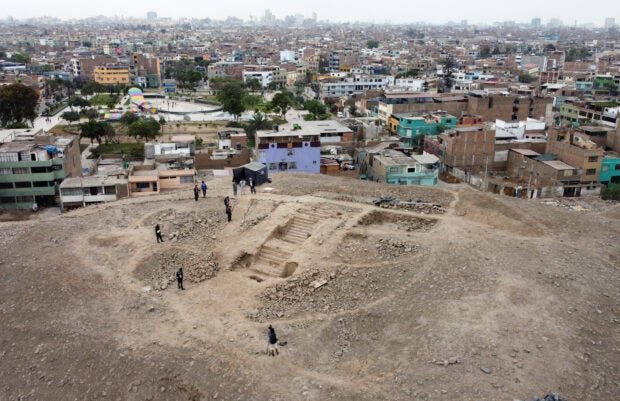In the heart of modern Lima, Peru’s bustling capital, archaeologists have made a significant discovery that connects the present with the ancient past. Unearthed in one of Lima’s oldest neighborhoods, four mummies of children, believed to be over a thousand years old, offer a glimpse into the life and customs of the Ychsma culture, which flourished along Peru’s central coast before the rise of the Inca Empire.
The discovery, made on Monday, also included the remains of an adult, suggesting a deeper cultural significance to the find. The mummies were found at the base of a small hill, under which a temple, estimated to be around 3,500 years old, was believed to be hidden. This revelation points to the site’s historical role as a sacred ceremonial space, even during the Ychsma period, according to Luis Takuda, an archaeologist working in Lima’s Rimac district.
Takuda explained that this area had been a vital ceremonial chamber for the people who lived during the Ychsma era. They considered it a sacred space, as evidenced by their practice of burying the dead there. The discovery of these mummies, with their skulls still adorned with hair, alongside various ceramics, further emphasizes the ritualistic importance of the site.
This finding in Lima, a city with a current population of approximately 10 million and home to around 400 archaeological sites, showcases the rich historical tapestry of Peru. While the country’s largest and most famous archaeological sites, such as Cusco – the former capital of the Inca Empire that fell to Spanish conquistadores in the 16th century – are located outside the capital, this recent discovery underscores Lima’s own significant historical depth.
The child mummies offer a unique window into the practices and beliefs of the Ychsma culture, a society that thrived in the region long before the Incas’ dominance. As archaeologists continue to explore and study these remains, they hope to uncover more about the rituals, lifestyle, and social structures of this ancient civilization. This discovery not only enriches our understanding of Peru’s pre-Columbian past but also forms a bridge connecting the contemporary city of Lima with its ancient roots.
READ MORE:
